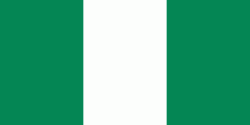Gombe State (Gombe State)
Geographically, the state is within the tropical West Sudanian savanna ecoregion. Important geographic features include the Gongola River, which flows through Gombe's north and east into Lake Dadin Kowa, and part of the Muri Mountains, a small range in the state's far south. Among the state's nature are a number of snake species including carpet viper, puff adder, and Egyptian cobra populations along with hippopotamus, Senegal parrot, and grey-headed kingfisher populations.
Ethnically, the State is inhabited by various ethnic groups, primarily the Fulani people living in the north and center of the state along with the Bolewa, Kanuri, and Hausa people, while the state's diverse eastern and southern regions are populated by the Cham, Dadiya, Jara, Kamo, Pero, Tangale, Tera, and Waja people.
In the pre-colonial period, the area that is now Gombe State was split up between various states until the early 1800s, the Fulani jihad seized much of the area and formed the Gombe Emirate under the Sokoto Caliphate. In the 1910s, British expeditions occupied the Emirate and the surrounding areas, incorporating them into the Northern Nigeria Protectorate which later merged into British Nigeria before becoming independent as Nigeria in 1960. Originally, modern-day Gombe State was a part of the post-independence Northern Region until 1967 when the region was split and the area became part of the North-Eastern State. After the North-Eastern State was split, Bauchi State was formed in 1976 alongside ten other states. Twenty years afterward, a group of LGAs in the Bauchi's west was broken off to form the new Gombe State.
Economically, Gombe State is largely based around agriculture, mainly of sorghum, maize, groundnuts, millet, beans, rice and tomatoes. Other key industries are services, especially in the city of Gombe, and the livestock herding of camels, cattle, goats, and sheep. Gombe has the fourth lowest Human Development Index and second lowest GDP in the country.
Gombe State's slogan is the Jewel In The Savannah. It was formed in October 1996 from part of the old Bauchi State by the Abacha military government.
The state has an area of 20,265 km2 and a population of around 2,365,000 people as of 2006.
It was formed in October 1996, from part of the old Bauchi State by the Abacha military government. The state is located in Nigeria's Guinea savannah and Sudan savannah belts. Undulating hills, sandy rocks, and a few volcanic rocks make up the landscape. Its location in the north eastern zone, right within the expansive savannah, allows the state to share common borders with the states of Borno, Yobe, Taraba, Adamawa and Bauchi.
Gombe has two distinct climates, the dry season (November–March) and the rainy season (April–October) with an average rainfall of 850mm.
The State is headed by the Executive Governor Muhammad Inuwa Yahaya and also has 24 State House Assembly members. Gombe has 11 Local Government Areas and 14 Emirates/chiefdoms. It has 3 Senators and 6 Members in the National Assembly (Nigeria).
Map - Gombe State (Gombe State)
Map
Country - Nigeria
 |
 |
| Flag of Nigeria | |
Nigeria has been home to several indigenous pre-colonial states and kingdoms since the second millennium BC, with the Nok civilization in the 15th century BC, marking the first internal unification in the country. The modern state originated with British colonialization in the 19th century, taking its present territorial shape with the merging of the Southern Nigeria Protectorate and Northern Nigeria Protectorate in 1914 by Lord Lugard. The British set up administrative and legal structures while practising indirect rule through traditional chiefdoms in the Nigeria region. Nigeria became a formally independent federation on 1 October 1960. It experienced a civil war from 1967 to 1970, followed by a succession of military dictatorships and democratically elected civilian governments until achieving a stable democracy in the 1999 presidential election. The 2015 general election was the first time an incumbent president failed to be re-elected.
Currency / Language
| ISO | Currency | Symbol | Significant figures |
|---|---|---|---|
| NGN | Nigerian naira | ₦ | 2 |
| ISO | Language |
|---|---|
| EN | English language |
| HA | Hausa language |
| IG | Igbo language |
| YO | Yoruba language |















